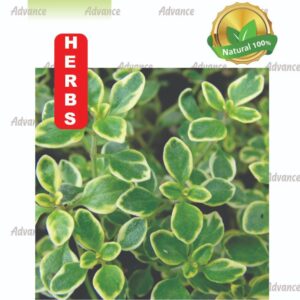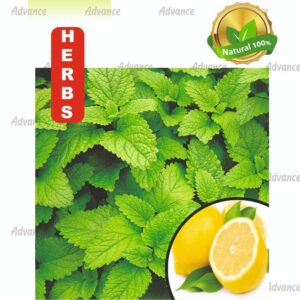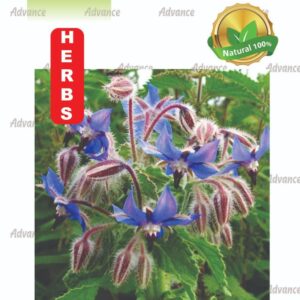Oregano seeds
₹ 40.00
Oregano seeds
About this item
- Growing oregano is easy.
- Oregano can be grown from seeds, cuttings, or purchased container plants.
- Seeds should be started indoors prior to your region’s last expected frost.
- There’s no need to cover oregano herb seeds with soil.
Free delivery on order above Rs 200
Images are for reference purposes only. Actual product may vary in shape or appearance based on climate, age, height, etc. The product is replaceable but not returnable.
Oregano (Origanum vulgare) is a flavorful herb commonly used in Mediterranean and Italian cuisines. Growing oregano from seeds is a straightforward process, and it allows you to enjoy the fresh and aromatic leaves for culinary purposes. Here’s a guide on how to grow oregano from seeds:
Growing Oregano from Seeds:
1. Selecting Oregano Seeds:
- Choose high-quality oregano seeds from a reputable supplier. There are different varieties of oregano, so choose the one that suits your culinary preferences.
2. Timing:
- Oregano seeds can be started indoors in late winter or early spring, about 6-10 weeks before the last expected frost date in your area.
3. Seed Starting Mix:
- Use a well-draining seed starting mix or a mixture of potting soil and perlite. Oregano prefers soil that provides good drainage.
4. Sowing Seeds Indoors:
- Sow oregano seeds on the surface of the seed starting mix. Lightly press the seeds into the soil, but do not cover them, as oregano seeds require light to germinate.
5. Watering:
- Keep the soil consistently moist during the germination period. You can use a spray bottle or a gentle watering can to avoid displacing the seeds.
6. Light:
- Oregano seeds require light for germination. Place the seed trays in a location with bright, indirect sunlight or provide supplemental light with fluorescent or LED grow lights.
7. Germination Time:
- Oregano seeds usually germinate in about 7 to 14 days. Once the seedlings have developed a few sets of true leaves, they can be transplanted.
8. Transplanting:
- Transplant the oregano seedlings into larger pots or directly into the garden when they are a few inches tall and have several true leaves. Space the plants about 12-18 inches (30-45 cm) apart.
9. Outdoor Planting:
- Choose a sunny location with well-draining soil for planting oregano. Oregano is well-suited to container gardening as well.
10. Watering:
- Water oregano plants consistently, keeping the soil evenly moist. However, oregano is drought-tolerant once established, and it’s important not to overwater.
11. Mulching:
- Apply a layer of organic mulch around the base of oregano plants to help retain soil moisture, regulate temperature, and suppress weed growth.
12. Harvesting:
- You can start harvesting oregano leaves once the plant has reached a sufficient size. Harvest by cutting the stems just above a pair of leaves. Regular harvesting encourages bushier growth.
13. Pruning:
- Prune oregano regularly to maintain a compact and bushy shape. Remove the flower buds to encourage continuous leaf production.
14. Overwintering:
- Oregano is a perennial herb, and in many regions, it can overwinter outdoors. Mulching around the base of the plant helps protect it from harsh winter conditions.
Growing oregano from seeds allows you to enjoy the fresh, aromatic leaves in your culinary creations. Oregano is known for its versatility and can be used in various dishes, including pasta sauces, soups, salads, and more. Additionally, it is a low-maintenance herb that thrives in well-drained soil and sunny locations.
Culinary Uses:
- Italian and Mediterranean Cuisine:
- Oregano is a staple in Italian and Mediterranean cuisines. It is a key ingredient in pizza and pasta sauces, providing a distinct and savory flavor.
- Pizza Topping:
- Oregano is often sprinkled on top of pizza to enhance the overall flavor. It pairs well with tomato-based sauces and cheeses.
- Tomato Dishes:
- Oregano complements tomato-based dishes, including marinara sauces, soups, and roasted tomatoes.
- Herb Blends:
- Oregano is a common component in herb blends, such as Italian seasoning or herbes de Provence, adding depth and complexity to various recipes.
- Grilled Meats:
- Oregano is used as a seasoning for grilled meats, imparting a savory and aromatic flavor. It works well with lamb, chicken, and pork.
- Vegetables:
- Oregano can be used to season a variety of vegetables, including roasted vegetables, sautéed greens, and grilled vegetables.
- Salad Dressings:
- Oregano adds a flavorful punch to salad dressings, particularly those used in Greek salads or Mediterranean-inspired salads.
- Soups and Stews:
- Oregano is a popular herb in soups and stews, contributing to the overall savory and aromatic profile of the dish.
- Breads and Savory Pastries:
- Oregano can be added to bread dough or savory pastry recipes to infuse a delightful flavor into baked goods.
Medicinal Uses:
- Digestive Health:
- Oregano has been traditionally used to aid digestion and alleviate digestive discomfort. It is believed to have carminative properties.
- Antioxidant Properties:
- Oregano contains compounds with antioxidant properties, which may help neutralize free radicals in the body.
- Anti-Inflammatory:
- Oregano is known for its anti-inflammatory properties, which may be beneficial for reducing inflammation in the body.
- Antimicrobial and Antibacterial:
- Oregano contains compounds with antimicrobial and antibacterial properties. Oregano oil, in particular, is sometimes used for its potential antimicrobial effects.
- Respiratory Health:
- Oregano is used in herbal teas and infusions to help soothe respiratory discomfort. It may be beneficial during colds or respiratory infections.
Other Uses:
- Aromatherapy:
- The aromatic qualities of oregano make it a candidate for aromatherapy. Oregano essential oil may be diffused to create a calming atmosphere.
- Natural Insect Repellent:
- Oregano oil is sometimes used as a natural insect repellent. It can be diluted and applied to the skin to deter insects.
- Herbal Infusions:
- Oregano leaves can be used to make herbal infusions or teas, offering a pleasant and flavorful beverage.
- Topical Applications:
- Oregano oil may be diluted and applied topically for certain skin conditions, but it should be used with caution due to its potency.
While oregano is generally safe when used in culinary amounts, medicinal uses should be approached with caution. Oregano supplements or concentrated forms should be used under the guidance of a healthcare professional. Always ensure that you positively identify the type of oregano you are using, as different varieties may have varying flavors and aromas.
Additional information
| Quantity | 1 PKT |
|---|
















Reviews
There are no reviews yet.